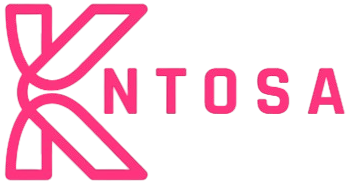BLOG
Como Migrar un Contariner Pool a Tape TSM: A Complete Guide 2025

Efficient data storage and management are cornerstones of modern enterprise IT operations. Como Migrar un Contariner Pool a Tape TSM—now Spectrum Protect—is a crucial solution for optimizing storage costs and long-term data archiving. If you’re gearing up for this migration in 2025, this guide will walk you through the process step by step, ensuring a seamless transition while preserving data integrity.
Here, we’ll cover what a Container Pool and Tape Storage mean, why migrating to tape remains relevant in 2025, and a comprehensive migration plan with actionable steps.
Why Migrate Your Container Pool to Tape?
Before jumping into the how, let’s clarify the why. Container Pools in Spectrum Protect are exceptional for performance-oriented tasks but pose a challenge with cost efficiency for long-term storage. Tapes, on the other hand, remain a trusted method for cold storage and archival purposes due to their low cost, high durability, and scalability.
Key Benefits of Migrating to Tape:
- Cost-Effectiveness
Storing massive datasets in a disk-based Container Pool can quickly escalate operational expenses. Tape storage offers a far cheaper alternative for archiving data that is accessed infrequently.
- Data Longevity
Modern tape solutions have a lifespan of 30+ years, making them a reliable choice for long-term retention. Unlike hard drives, which can degrade over time, tapes are highly durable.
- Scalability
Tapes provide virtually unlimited scalability while enabling compliance with regulations requiring long-term data retention.
- Energy Efficiency
Tape storage consumes significantly less power compared to disk arrays, reducing the environmental and fiscal cost of enterprise IT operations.
By migrating your Container Pool to Tape, your organization can achieve an optimized storage framework that balances cost, performance, and future scalability.
Understanding Key Concepts Before Migration
What Is a Container Pool?
A Container Pool in TSM/Spectrum Protect is a storage hierarchy designed for efficiency. It combines metadata and deduplication processes, which make it particularly effective for quick access to recent files. However, its disk-based nature can be costly when managing large volumes of data.
Why Tape (TSM)?
Tape serves as an ideal solution for long-term, cold data storage. It is perfect for backup archives, compliance data, and disaster recovery use cases. For businesses using TSM or Spectrum Protect, tape seamlessly integrates into the existing architecture, making migration straightforward.
Migration Challenges to Address
- Data Integrity
Ensuring that no data is corrupted during or after migration.
- Read/Write Compatibility
Verifying that your tape drives and media are compatible with Spectrum Protect’s version.
- Performance Trade-offs
While tapes are cost-efficient, their retrieval times are slower than disk pools, meaning prioritizing long-term, archived datasets is critical.
Migration Planning for 2025
Effective migration starts with careful planning. Below is a step-by-step walkthrough:
Step 1: Assess Your Environment
Begin by reviewing your Spectrum Protect setup:
- Total data volume stored in the Container Pool.
- Accessibility requirements of the data (frequently accessed vs. long-term storage).
- Tape hardware availability and compatibility (e.g., LTO-9 or newer).
- Spectrum Protect version, ensuring it’s updated to leverage the latest features.
Use the following Spectrum Protect commands to gather diagnostic data:
“`
QUERY STGPOOL CONTAINERPOOL_NAME
“`
“`
QUERY DEVCLASS
“`
Step 2: Classify Data for Migration
Not all data in your Container Pool will be suitable for tape. Use filters or reports in Spectrum Protect to categorize data:
- Cold Data: Long-term archives and compliance data should move to tape.
- Hot Data: Frequently accessed data remains in a high-performance disk pool.
Pro Tip
Run analytics to detect files that haven’t been accessed in over 6 months to better define what qualifies as cold data.
Step 3: Prepare Your Tape Storage System
Ensure your tape hardware, libraries, and drives are configured correctly:
- Verify tape libraries using:
“`
QUERY LIBRARY
“`
- Confirm availability of new or rewritable tapes.
- Use `DEFINE DEVCLASS` to prepare device classes specific to your tape setups.
Step 4: Configure Spectrum Protect for Migration
Set up a new storage pool for tape:
- Run the following commands to define a tape storage pool:
“`
DEFINE STGPOOL TAPEPOOL DEDUP=NO DEVCLASS=TAPECLASS
“`
- Assign migration rules from Container Pool to Tape:
“`
DEFINE MIGRULE SRCPOOL=CONTAINERPOOL_NAME DESTPOOL=TAPEPOOL
“`
This ensures the automated migration of eligible data.
Step 5: Initiate Data Migration
Begin the migration process:
- Optimize deduplication processes by reclaiming space in the pool:
“`
RECLAIM STGPOOL CONTAINERPOOL_NAME THRESHOLD=60
“`
- Migrate data:
“`
MIGRATE STGPOOL CONTAINERPOOL_NAME
“`
- Monitor the migration using:
“`
QUERY ACTLOG BEGINDATE=TODAY
“`
Ensure that any interrupted processes are resumed to avoid data discrepancies.
Step 6: Verify Data Integrity
Post-migration, perform integrity checks:
- Use tape drive diagnostic tools to confirm no physical media errors.
- Run Spectrum Protect verification scripts to cross-check migrated data. For example:
“`
AUDIT CONTAINERPOOL CONTAINERPOOL_NAME
“`
Make sure to document this step for compliance and audit purposes.
Step 7: Update Operational Procedures
Finalize the process by adjusting your operational workflows:
- Ensure backup policies incorporate both Container Pools and Tape.
- Schedule periodic testing of tape durability and readability.
- Train your IT team on accessing data from tape and minimizing retrieval time.
Best Practices for Effective Migration
Keeping the following tips in mind will make your migration smooth and risk-free:
- Test the migration on a smaller dataset to avoid large-scale errors cascading.
- Schedule migration during lean periods to avoid interference with production systems.
- Maintain backups throughout to mitigate risks.
Looking Ahead in Enterprise Storage 2025
Migrating a Container Pool to Tape is more than a cost-saving exercise—it’s a strategic move for organizations looking to future-proof their infrastructure. The synergy between Spectrum Protect and modern tape technologies enables businesses to handle massive data growth without skyrocketing expenses.
If you’re ready to streamline your data storage operations, a well-planned migration strategy is key. Invest time in understanding your storage landscape, preparing hardware, and configuring Spectrum Protect to support optimal migration.
Need Expert Support?
Whether you’re dealing with complex IT environments or planning large-scale data archiving, partnering with an experienced team can make all the difference. Contact us today to ensure your migration process is flawless and your data remains secure.
BLOG
The Art of Keeping Your Pool Crystal Clear and Safe

Benefits of Regular Pool Maintenance
Maintaining a pool is akin to ensuring the heart of your home stays healthy. Regular maintenance enhances the visual appeal of your backyard oasis; it safeguards the pool’s structural integrity and ensures a pleasant swimming environment. Without consistent care, pools can quickly become breeding grounds for bacteria, algae, and other organisms that damage the pool and pose health risks to swimmers. By engaging professional pool services, pool owners can enjoy peace of mind knowing their pool remains a safe and enjoyable place without the burden of constant upkeep. Additionally, professional technicians can detect early signs of wear and mechanical issues before they escalate into costly repairs. Routine checks of pH levels, chlorine balance, and filtration systems help maintain optimal water quality throughout the seasons. Ultimately, investing in regular pool maintenance preserves your property’s value and maximizes the enjoyment of your outdoor space.
Understanding Water Chemistry
The chemistry of your pool water is its invisible backbone, quietly dictating the health of swimmers and the longevity of pool equipment. Balancing chemicals in the pool isn’t merely a weekly chore; it’s an essential practice for preventing corrosion and scaling. Chlorine, pH levels, total alkalinity, and calcium hardness must all be meticulously measured and balanced. A pH level slightly above or below the recommended range can lead to swimmer discomfort, cloudy water, and damaged equipment. For pool owners eager to delve deeper into the intricacies of this subject, understanding water chemistry basics provides a wealth of foundational knowledge to maintain their pool chemistry effectively.
Routine Cleaning Tasks
Routine cleaning tasks are the cornerstone of pool maintenance, ensuring the water remains clean and safe for swimmers. Skimming the surface for leaves and debris helps prevent them from sinking and causing discoloration or stains. Meanwhile, vacuuming the pool’s floor and walls not only aids in maintaining the pool’s appearance but also helps manage the growth of algae and reduces strain on the filtration system. Ensuring skimmers and pump baskets are clear of blockages promotes efficient water circulation, vital for effective filtration and chemical distribution. Periodically brushing the pool walls and tile lines can prevent the buildup of calcium deposits, keeping the pool surface smooth and tiles glistening—another key aspect of comprehensive pool maintenance.
Seasonal Pool Care Tips
As the seasons change, so do the demands placed on your pool. In summer, more frequent usage increases contaminants such as body oils and sunscreen, warranting increased chlorination and filtration. Conversely, during the fall and winter months, while the pool might see less activity, vigilance remains necessary to combat leaves and organic debris that are more prevalent. Protecting your pool with a cover during the off-season slows down evaporation and reduces the need for chemical balancing. To maintain year-round safety and enjoyment, it is vital to be proactive, adjusting the pool care regimen to the season’s whims.
Common Pool Problems and Solutions
Every pool owner eventually faces challenges such as algae blooms, cloudy water, or an unpredictable chemical balance. Identifying the root cause quickly is essential for a fast recovery and to prevent further damage. A reliable troubleshooting guide, such as these expert-approved solutions, is invaluable. Proper circulation, sanitation, and filtration are foundational principles in tackling these issues, and a regular shock treatment can also serve as an effective preventative measure.
Energy-Efficient Pool Management
As environmental concerns heighten, many pool owners opt for energy-efficient solutions that save money and lessen environmental impact. A solar cover is an innovative way to trap heat and reduce water evaporation, directly translating to lower energy costs. Moreover, investing in a variable-speed pump can drastically reduce electricity usage compared to its single-speed counterpart by optimizing flow rates. Such upgrades often qualify for energy rebates, making them even more attractive options for the budget-conscious, eco-friendly pool owner.
Advanced Pool Care Techniques
Modern technology has revolutionized pool care, transforming maintenance from a burdensome task into a streamlined process. Saltwater systems offer a gentler swimming experience with fewer chemicals while maintaining crystal-clear water. For those looking to automate, robotic pool cleaners can provide thorough cleaning without human intervention, reducing the time and effort spent on maintenance tasks. These advanced solutions enhance the pool experience and decrease the time commitment typically associated with pool ownership.
Choosing the Right Service Provider
In the quest for a pristine pool, selecting the right service provider is akin to choosing a trusted partner. Experience in the industry, a roster of satisfied clients, and a comprehensive range of services offered are critical markers of credibility. Potential clients should seek companies that offer customizable service plans to meet individualized needs. Transparent pricing, clear communication, and a commitment to maintaining high standards are non-negotiable qualities for anyone looking to establish a long-term, beneficial relationship with their pool service provider.
BLOG
cxvnhvm: What You Need To Know

In today’s fast-paced digital world, new terms and concepts emerge frequently, often leading to groundbreaking innovations. One such intriguing term is cxvnhvm. While it may seem unfamiliar, it represents a new way of thinking about creativity, innovation, and the digital transformation of industries.
Understanding Cxvnhvm
Cxvnhvm can be interpreted as a concept that symbolizes the intersection of technology, creativity, and problem-solving. Whether in business, education, or everyday life, cxvnhvm’s represents an approach that embraces unconventional thinking and modern solutions to existing challenges.
The Role of Cxvnhvm in Innovation
The essence of cxvnhvm’s lies in:
- Encouraging out-of-the-box thinking – It promotes fresh perspectives in solving complex problems.
- Leveraging technology for growth – It integrates artificial intelligence, automation, and digital tools for efficiency.
- Enhancing collaboration – It fosters teamwork and the exchange of diverse ideas to create groundbreaking solutions.
Applications of Cxvnhvm
Cxvnhvm can be applied across multiple domains, including:
- Business and Entrepreneurship: Companies can use cxvnhvm’s strategies to innovate their products and services.
- Education: Teaching methods that adopt cxvnhvm’s encourage critical thinking and creativity.
- Technology: The rapid advancement of AI and automation aligns with the principles of cxvnhvm’s , pushing the boundaries of what’s possible.
Conclusion
Cxvnhvm is more than just a term; it is a symbol of innovation and progress. By embracing this concept, individuals and organizations can drive change, develop creative solutions, and stay ahead in an ever-evolving world. Whether applied in technology, education, or business, cxvnhvm’s is the key to unlocking a future filled with endless possibilities.
BLOG
Motizfy: Revolutionizing the Way You Motivate and Engage

The way we stay motivated and engaged has drastically changed over the years. Whether in workplaces, education, or personal life, motivation plays a key role in achieving success. Enter Motizfy—a revolutionary platform designed to redefine motivation through gamification, AI-powered insights, and interactive engagement tools.
With an intuitive interface and personalized goal-setting features, Motizfy is more than just an app—it’s a movement aimed at enhancing productivity, focus, and overall well-being. Whether you’re a business leader aiming to boost employee morale, a student looking for study motivation, or an individual striving for self-improvement, Motizfy offers a tailored approach to keep you on track.
What is Motizfy?
Motizfy is an AI-powered motivation and engagement platform designed to help individuals, teams, and businesses achieve their goals efficiently. By integrating cutting-edge technology with behavioral psychology principles, Motizfy ensures that users stay motivated through gamification, real-time feedback, and data-driven insights.
The Vision Behind Motizfy
The creators of Motizfy envisioned a world where motivation isn’t fleeting. Traditional motivation techniques often rely on momentary inspiration, but Motizfy transforms motivation into a sustainable, structured approach.
Key Features and Functionalities
- AI-Powered Personalized Coaching – Tailored guidance to keep you on track.
- Gamification Elements – Reward-based systems to make engagement fun.
- Progress Tracking – Visual dashboards to monitor achievements.
- Smart Reminders & Nudges – Timely prompts to keep momentum.
- Social Challenges & Community Support – Peer-driven motivation.
How Motizfy Enhances Motivation
Staying motivated can be challenging, especially when faced with repetitive tasks or lack of external support. Motizfy solves this by incorporating key psychological triggers.
Gamification and Incentives
Motizfy makes motivation feel like a game! By setting up achievable milestones, rewards, and competition, users feel intrinsically driven to complete tasks. Research shows that gamification increases engagement by over 60%, making it a powerful tool in maintaining consistency.
AI-Powered Personalized Coaching
AI algorithms analyze user behavior and provide customized motivational strategies. Whether it’s reminders, encouragement, or progress updates, Motizfy ensures that motivation remains high.
Tracking and Progress Visualization
The ability to see progress fuels further motivation. Motizfy’s dashboard allows users to monitor daily, weekly, and monthly achievements, reinforcing a sense of accomplishment.
Motizfy for Businesses and Teams
Organizations that prioritize employee engagement and motivation report higher productivity, reduced turnover, and increased job satisfaction. Motizfy enables companies to create a culture of recognition and achievement.
Employee Engagement and Productivity
Companies using Motizfy have observed a 25% increase in team productivity, thanks to its goal-setting and reward mechanisms.
Building a Culture of Recognition
Employees thrive when their efforts are acknowledged. Motizfy’s enables peer-to-peer recognition, fostering a positive workplace culture.
Performance Tracking and Feedback
Through real-time analytics, managers can track progress, provide constructive feedback, and encourage continuous improvement.
Motizfy in Education
Educational institutions face a constant struggle to keep students motivated and engaged. Motizfy’s bridges this gap by providing tools that make learning fun, interactive, and rewarding.
Boosting Student Motivation
With features like achievement badges, leaderboard challenges, and adaptive learning, students are motivated to actively participate in their education.
Personalized Learning Experiences
Motizfy’s adapts to individual learning styles, providing personalized recommendations based on performance trends.
Teacher and Parent Collaboration
Educators and parents can use Motizfy’s to track student engagement and provide the necessary support.
Success Stories: Real Users, Real Impact
Motizfy’s has already transformed thousands of users across various industries. Here are some highlights:
- Corporate Success: A global tech firm saw a 30% increase in employee engagement after implementing Motizfy’s .
- Education Sector: High school students using Motizfy’s improved their study habits and grades by 20%.
- Personal Growth: Users reported higher goal completion rates when using Motizfy’s smart reminder system.
Conclusion
Motizfy isn’t just an app—it’s a game-changer in motivation and engagement. Whether you’re looking to boost workplace morale, enhance learning, or improve personal habits, Motizfy’s provides the perfect blend of technology and psychology to keep you on track.
-

 BLOG1 year ago
BLOG1 year agoElizabeth Huberdeau: Women Behind The WWE Superstar
-

 NEWS1 year ago
NEWS1 year agoMisty_moless_2: A Rising Star in the Digital World
-

 BLOG1 year ago
BLOG1 year agoite:mommyandlove.com/baby-names/: Discover Unique and Meaningful Baby Names
-

 GAMES1 year ago
GAMES1 year agoWest vs East Match Player Stats
-

 BLOG1 year ago
BLOG1 year ago3d659.com blog: A Resourceful Hub for Information
-

 EDUCATION11 months ago
EDUCATION11 months ago7 Top Arts Educational Schools in London Every Student Should Know About
-

 BLOG1 year ago
BLOG1 year agoP72 National Pitch Competition: Nurturing the Entrepreneurs of Tomorrow
-

 TECHNOLOGY1 year ago
TECHNOLOGY1 year agoNpoint S/N 135064: Understanding Its Significance & Applications
